Many areas of New York are deserving of preservation. Large portions of the West Village, the Upper West Side, and a host of other neighborhoods (Tudor Hill, SoHo, the Lower East Side) immediately come to mind. What one doesn’t think of as historic is an area dominated by old warehouses that is completely devoid of street-life and mostly unlivable–in this case, ‘Hudson Square’–which Trinity Church seeks to gradually develop over the next decade.
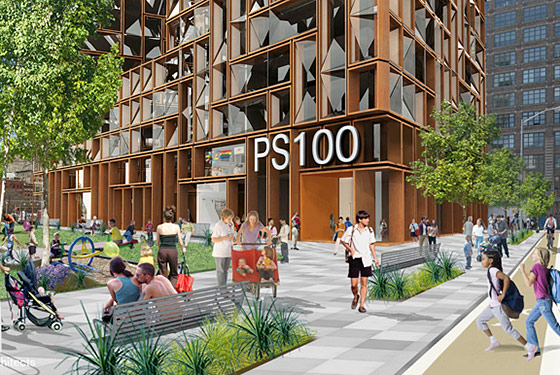 |
| New public school in Hudson Square: Image from SHoP Architects via NYMAG |
Trinity’s plans call for adding up to 3,500 apartments to the neighborhood, including a new tower over 400′ tall with a public school at the bottom. The neighborhood is literally devoid of most life… with the exception of rats and NIMBYs. The planned development has met extensive opposition, even over the planned school. This comes at a time when Manhattan is seeing a relative baby boom, and is greatly lacking space for education. With the emphasis NIMBYs place on developing affordable units for families rather than singles, the stance seems quite out of touch.
Indeed, this article from The Villager has one NIMBY proclaim “I can’t imagine building a school at Duarte Square triangle with all that traffic,” which is patently ridiculous. People in New York are the most apt in the nation to use public transit, and school children are no exception–and that’s if they don’t walk. The city doesn’t cater to drivers, so using this as an excuse to protest development makes no sense whatsoever!
Some concerns are valid, as the far West Village is certainly no Midtown or Downtown. Nonetheless, in order to make the neighborhood more affordable, development should actually be encouraged, as there is a massive dearth of housing options in the neighborhood. As New York seeks to encourage more families to relocate to the city, encouraging development to the point where market-rate housing is no longer extremely expensive is what ultimately needs to happen.
Trinity’s plan is an important first step in this process, although something more ambitious would be even better. Some residents have concerns strictly over height rather than the scope of development, with Tobi Bergman, a Community Board 2 member, saying that “You don’t need 300-foot-tall buildings to achieve a 9 or 10 F.A.R. [Floor Area Ratio],” which is a completely valid point. One only needs to look to the District of Columbia (or Paris) to see how high-density development can occur at relatively low heights–in D.C.’s case, the highest buildings are only twelve or thirteen floors.
New York is no D.C., but that shouldn’t stop developers from filling out lower portions of their plots more efficiently. Trinity’s proposed area for rezoning (again, from The Villager), is clearly made up of many large plots that are currently warehouses or formerly factories, which would make prime candidates for large-scale redevelopment.
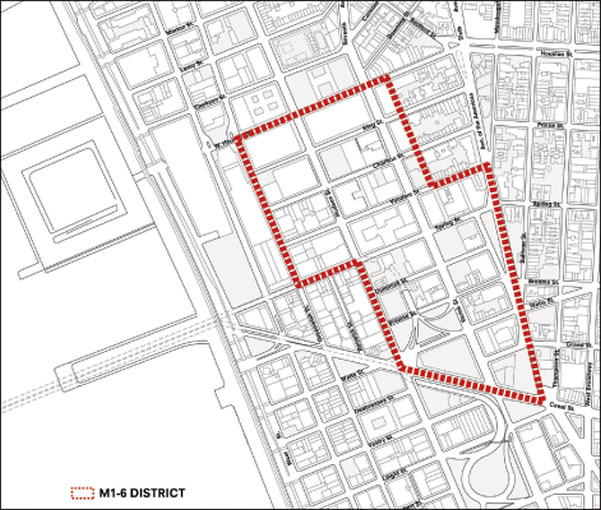 |
| Trinity’s application via The Villager |
Certainly, a neighborhood of 300-400′ highrises would be much more desirable than how the area exists in its current state, which is quite desolate. Warehouses have their charm, but this is Manhattan, and the pressure of lowering the cost of market-rate housing should outweigh concerns over a few dilapidated structures.
Perhaps a solution that could benefit everyone would be expanding Trinity’s allowed FAR in return for having Trinity build a platform over the entrance ramps to the Holland Tunnel? Nothing downtown compares to the entrance to the Lincoln Tunnel, which is a warren of ramps and pedestrian-hostile roads, but the Holland Tunnel’s entrance is also a waste of precious real estate. Building some kind of park on top would alleviate the need for more green space in the neighborhood while also covering up one of the biggest eyesores in downtown Manhattan.
Besides Trinity’s stake in the neighborhood, another tower has been proposed at Spring and Dominick Streets. Yet again, NIMBYism has reared its ugly head, even though the developers have already planned major concessions to the public’s benefit–besides the new tower, which will rise a mere 320 feet, Edison Properties proposes a new 13,700 square foot park adjacent to Dominick Street. Despite these major improvements, many NIMBYs are still outraged, arguing that the height of new buildings is somehow linked to quality of life issues–in the meantime, residents are flocking to the Financial District, where the vast majority of buildings are skyscrapers.
Regardless of the eventual outcome, Trinity is one of the biggest players in the ‘Hudson Square’ neighborhood and their actions will shape its future for better or worse. Encouraging more development is ultimately beneficial to everyone, so long as the new development isn’t out of scale. One certainly wouldn’t argue for new skyscrapers in the Village or SoHo (even Trump SoHo pushes the limits slightly too far for the character of its neighborhood), but anywhere else in Manhattan is fair game. The far West Village is no exception, and the choice is clear: remain a secluded and pedestrian-hostile bastion of times gone by, or transform into a vibrant residential neighborhood, providing families with places to live as well as new public facilities. The choice should not be difficult.
For more information, the following articles are helpful–
The Villager: Hudson Square Heights Too High, Residents Say on Zoning
The Villager: Trinity Says It’s Time for Residential in Hudson Square
Subscribe to YIMBY’s daily e-mail
Follow YIMBYgram for real-time photo updates
Like YIMBY on Facebook
Follow YIMBY’s Twitter for the latest in YIMBYnews


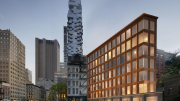

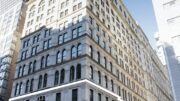
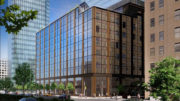
Awesome! Keep up the good work, YIMBY.